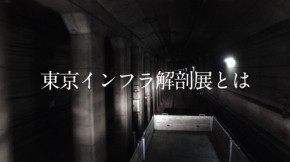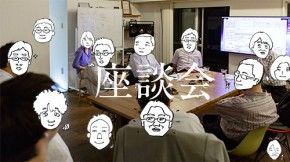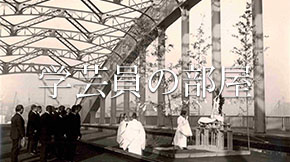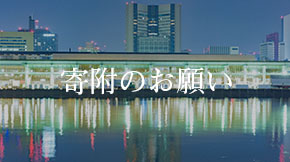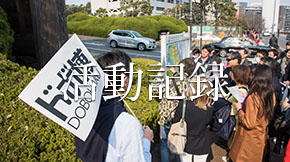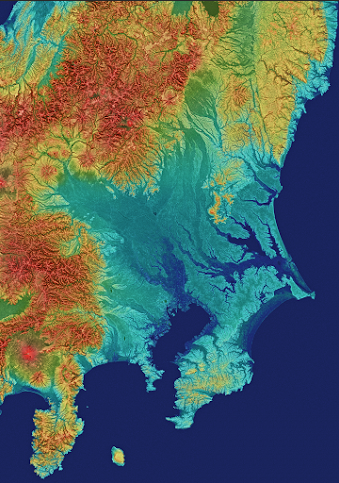
It is said that he has engaged in making more than 200 gardens in his lifetime. What was in common was to shape the earth with scales and techniques that match the potential of the land. It is well known that he had a habit of saying that the place held “Great Capabilities” in front of future orderer. As this optimistic and positive cliché was too famous, he eventually left his name in history with the nickname of “Capability Brown” rather than his real name.
More than 100 years before “Capability Brown” was born, there was a samurai who tried to alter the earth filled with “Great Capabilities” in Japan. That is TOKUGAWA Ieyasu, the first generals of the Edo shogunate. He gathered nationwide feudal lords in Edo, old name of Tokyo, and developed a large civil engineering works in this vast land full of unknown possibilities.
Break down the plateau, landfill the ocean, reclaim wetlands. Then infrastructure such as moats, roads, water works, harbors, block, etc. are formed one after another while checking the rich potential of the land such as ridge muscle, river, cliff field, spring water and so on. As if to perform
After Edo period, Tokyo was exposed to rapid changes. The Restoration of Meiji, the Great Earthquake, severe war damage during the WWII, the reconstruction during high growth period, extreme land development during the “bubble economy” at the end of the 20th century and its collapse. In the meantime, people dreamed of the next era, and they updated constantly infrastructure.
As in the Edo period, it is not an era that one power lets control the construction of metropolitan infrastructures. Various stakeholders participate in the construction on various scales, large or small. Even in a crisis situation where urban “vitality” has been remarkably weakened, such as after the earthquake and after the war, different stakeholders private or public carried out “surgery” to keep flowing new “blood” in the city. In this way, the current giant city Tokyo was born.
Today, it is difficult to find a relationship between the built environment and the topography as was emphasized in public works in the Edo period. Furthermore, the urban landscape in front of our eyes is camouflaged with different faces in the same place, such as sacred and secular things, day and night, order and bustle. As Roland Barthes mentioned in the essay “L’Empire des signes”, it certainly might be a kind of “jungle” that stimulates reason and sensibility.
In the exhibition “Tokyo Infrastructure Anatomy”, there are a number of tricks to understand and enjoy huge “organisms” like this “jungle”, our capital Tokyo. First, we divide the complex infrastructure of Tokyo’s infrastructure with organ systems such as “skeletal system”, “digestive system”, “circulatory system”. This is because infrastructures that support urban functions are found to have many similarities with human body organizations that maintain life. However, simply explaining the function does not convey the fun of “jungle”. Therefore, the viewpoints of infrastructure are presented diversely by video works taken with unique angle, drawings and photographs highlighting the structure of infrastructure, sentences incorporating the words of writers who call memories of land. In addition, we have prepared several “X-ray pictures” of Tokyothat emerge the figure of the topography hidden behind the aerial photographs. In this way, a scalpel is put in a complex organic body called Tokyo and it will be dissected…
After visiting this exhibition, let’s see the actual scenery spreading in front of your eyes, as Capability Brown or Shogun Ieyasu did. That way, a new Tokyo full of “Great Capabilities” will surely pull out your unknown imagination. (D.Kitagawa)
* This year 2016 is 300 years anniversary of Capability Brown’s birth, 400 years anniversary of Ieyasu’s death.
BIBLIOGRAPHY
BROWN, Jane: The omnipotent magician, Lancelot ‘Capability’ Brown, 1716-1783, London, Chatto & Windus, 2011.
HOSKINS, W.G.: The Making of the English Landscape, London, Penguin Books, 1955.
Photo provided by Asia Air Survey Co. LTD.
How to select 88 representative infrastructures in Tokyo.
1. To be a major infrastructure or topography of Tokyo that can be explained in relation to the human body organization;
2. To be an infrastructure to be awarded by JSCE;
3. That there are documents related to JSCE’s digital archive.
Cooperating organization









Production team
Keizo Uchida (coordination)
Takuya Omura (photography)
Sohya Oyama (web design, photography)
Shigeru Onoda (writing)
Daijiro Kitagawa (management, writing)
Seiya Takayanagi (round-table talk compilation)
Sachiko Doi (writing)
Akiyoshi Nii (writing)
Takeo Watanabe (video production, photography)
Collaborator
Akio Kurebayashi
Mayumi Sakai
Kimiko Sugiura
Keisuke Tamura
Tatsuro Chiba
Satoshi Hachima
Norihisa Minagawa
Shinichi Yabana
Yakul Inc.
Video Production Team
Aya Baba (camera operator)
Edih (camera operator)
Kohei Endo (camera operator)
Masayuki Kaneko (camera operator)
shibadogworks (driver)
Toshiki Fukasawa (RawLight) (camera operator)
Wataru Tonosaki (camera operator)
WhiteSand (camera operator)
Wks Wakasa(composer)
Y-park(URBAN SOUL RELAX LLC)(camera operator/video editor)
Yusuke Ishikawa(photography/camera operator)

